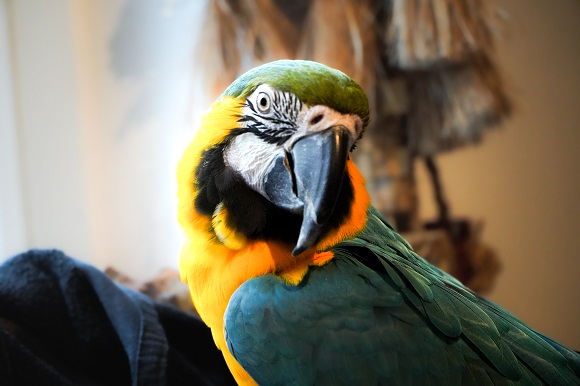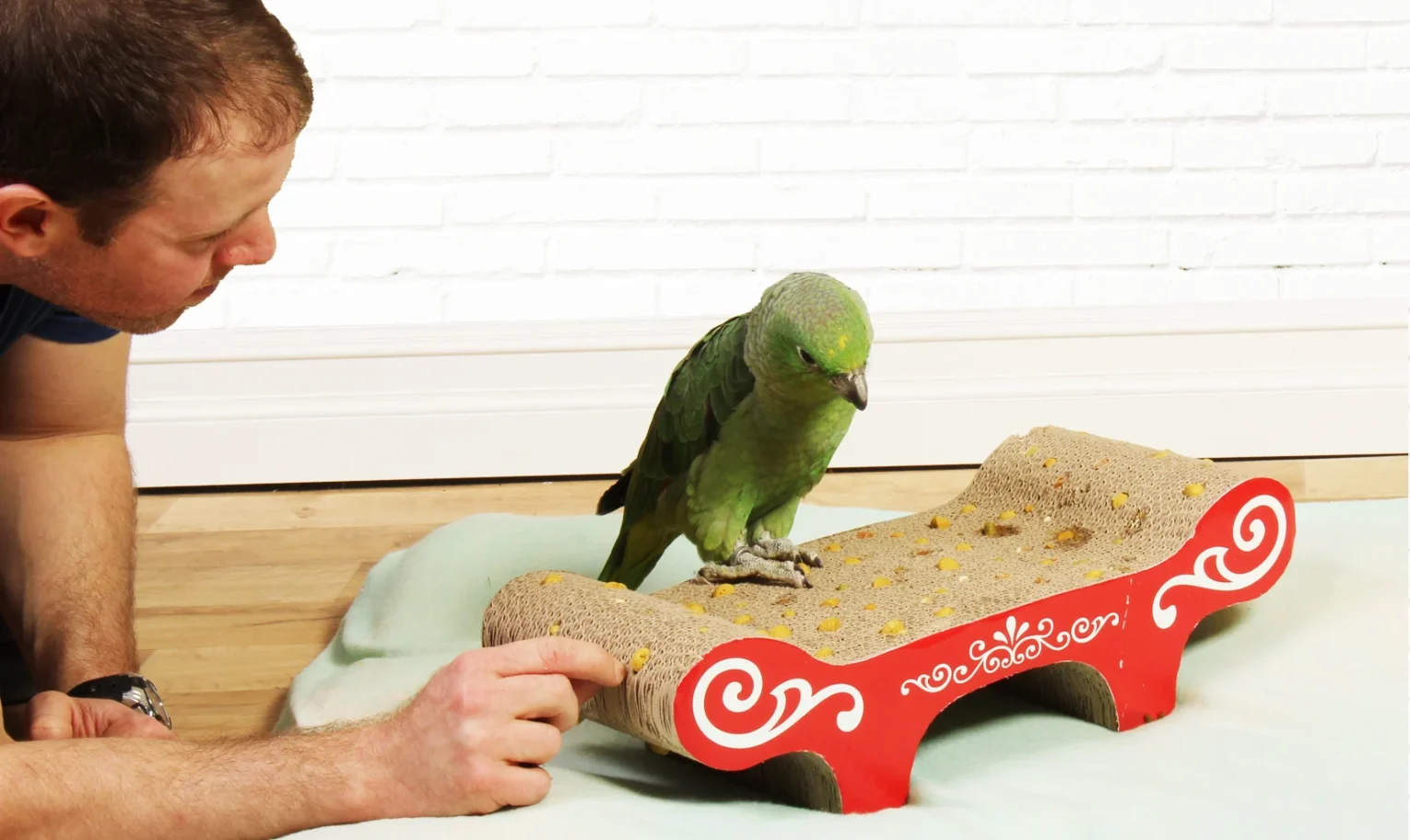
Foraging is a natural behavior for parrots that involves searching for food. In the wild, parrots spend a significant portion of their day foraging, which provides them with mental and physical stimulation. Incorporating foraging activities into your parrot’s daily routine can greatly improve their behavior and overall well-being. Here are four effective ways to use foraging to encourage good behavior in your parrot.
1. Mental Stimulation Through Foraging Toys
Foraging toys are a great way to provide mental stimulation for your parrot. These toys are designed to hide food or treats, encouraging your parrot to use problem-solving skills to access their rewards. By engaging in foraging activities, your parrot can reduce boredom and prevent negative behaviors such as feather plucking, screaming, or aggression.
Start by introducing simple foraging toys and gradually increase the complexity as your parrot becomes more adept at using them. Toys like puzzle feeders, treat balls, and shreddable toys can keep your parrot entertained and mentally active. Regularly rotating and varying the types of foraging toys can keep your parrot interested and challenged.
Using foraging toys not only provides entertainment but also mimics the natural behaviors of wild parrots. This helps in maintaining their mental health and preventing behavioral issues caused by boredom and lack of stimulation. A mentally stimulated parrot is less likely to engage in destructive behaviors and more likely to exhibit positive behavior. Additionally, foraging toys can be made at home using household items like cardboard boxes, paper, and natural materials, making it a cost-effective way to enrich your parrot’s environment.
2. Encouraging Physical Activity
Foraging can also promote physical activity, which is essential for your parrot’s health. By placing food and treats in different locations around the cage or play area, you encourage your parrot to move around and exercise. This physical activity helps maintain a healthy weight and strengthens muscles, reducing the risk of obesity and related health issues.
Create a foraging environment by hiding bird food in various parts of the bird cage, using natural materials like branches and leaves to conceal treats. This encourages your parrot to climb, explore, and search for their food, providing both physical exercise and mental engagement.
Incorporating physical activity into your parrot’s daily routine through foraging helps them stay fit and healthy. Active foraging can mimic the natural exercise they would get in the wild, contributing to their overall well-being and reducing stress. Setting up an environment that encourages natural behaviors, such as foraging for food, can lead to a happier and healthier parrot. Incorporate different textures and materials to create a diverse and stimulating environment.

3. Building Trust and Reducing Stress
Foraging activities can be used to build trust between you and your parrot. By participating in foraging games and activities together, you can strengthen your bond and create positive associations. Offering treats and rewards during foraging sessions helps your parrot associate your presence with positive experiences, reducing stress and building trust.
Start with simple foraging activities that you can do together, such as hiding treats in a treat box or under cups. Gradually increase the difficulty as your parrot becomes more comfortable and confident. This shared activity not only provides mental and physical stimulation but also enhances your relationship with your parrot.
Building trust through foraging activities can make your parrot more comfortable and less anxious in their environment. A parrot that trusts its owner is more likely to exhibit good behavior and respond positively to training and interaction. Engaging in foraging activities together helps your parrot see you as a source of fun and positive experiences, which strengthens your bond and reduces fear and anxiety.
4. Enhancing Problem-Solving Skills
Foraging activities can enhance your parrot’s problem-solving skills, leading to better behavior and a more engaged pet. By providing challenges that require your parrot to think and work to obtain their food, you can keep their mind sharp and active. This mental engagement can prevent boredom and associated behavioral issues.
Introduce different types of foraging challenges, such as puzzle feeders, where your parrot has to manipulate parts of the toy to access the food. Use foraging trays filled with paper, leaves, or other materials that your parrot has to dig through to find treats. These activities encourage your parrot to use their natural intelligence and problem-solving abilities.
Enhancing your parrot’s problem-solving skills through foraging can lead to a more satisfied and well-behaved pet. Engaging their mind in productive activities helps reduce negative behaviors and keeps them mentally healthy. Providing a variety of foraging challenges not only stimulates their brain but also mimics the diverse and unpredictable nature of foraging in the wild, which is crucial for their mental health.
Conclusion
Foraging is a powerful tool to encourage good behavior in parrots. By incorporating foraging toys, promoting physical activity, building trust, and enhancing problem-solving skills, you can provide your parrot with the mental and physical stimulation they need to thrive. With these strategies, you can improve your parrot’s behavior and ensure they lead a happy, healthy life.
Using foraging as part of your parrot’s daily routine can transform their behavior and enrich their life. The benefits of mental and physical stimulation, trust-building, and problem-solving are immense, making foraging an essential activity for any parrot owner. By incorporating these foraging strategies, you can create a more engaging and fulfilling environment for your parrot, leading to a happier and more well-behaved pet.
